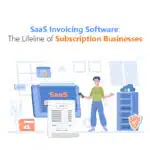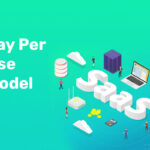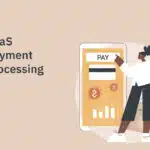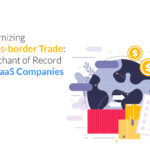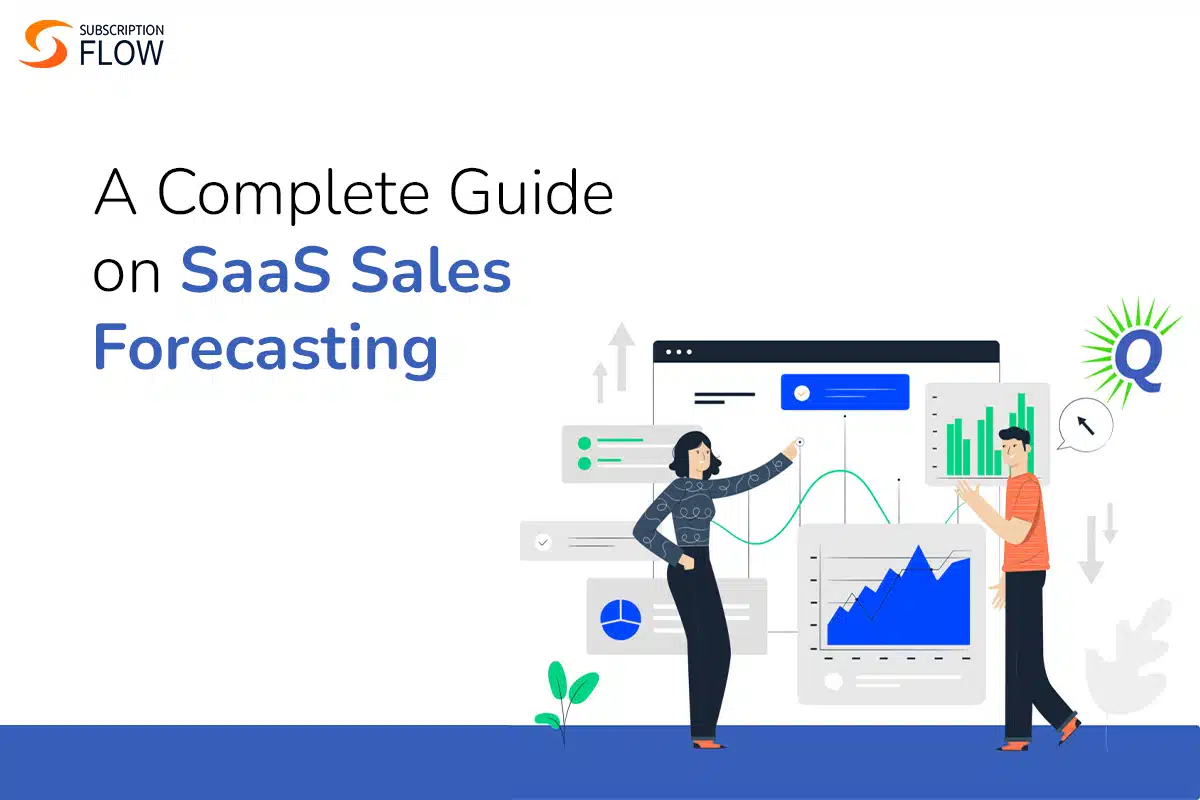
A Complete Guide on SaaS Sales Forecasting
In recent years, the use of SaaS has skyrocketed in response to a rapidly transforming work culture. According to Gartner, the worldwide end-user spending on cloud services is expected to reach $600 billion by 2023. With such rapid growth in this thriving market, it’s essential for businesses to nail their SaaS sales forecasting in order to stay competitive and remain on top of their game.
This blog will provide a comprehensive guide to SaaS sales forecasting. We’ll explore what SaaS sales forecasting entails, the essential metrics to track, different sales forecasting techniques, and strategies to help you forecast accurately and effectively.
SaaS Sales Forecast Definition
Sales forecasting for your SaaS company is the process of estimating projected sales in a given period, for example, a month, a quarter, or a year.
Why is SaaS Subscription Forecasting so Important?
Sales forecasting is critical for any business, but especially important for SaaS companies that rely on a subscription-based model, meaning their revenue generation is spread out over time.
This makes forecasting even more important for SaaS companies allowing them to plan for the long term and make strategic decisions based on projected revenue. Accurate forecasting helps businesses make informed decisions about resource allocation, budget planning, and growth strategies.
Additionally, accurate sales forecasting can also help mitigate risks by identifying potential issues and nipping them in the bud. For example, if a company forecasts a decrease in sales over the next quarter, it can take proactive measures such as adjusting pricing, offering personalized discounts, or increasing marketing efforts to mitigate the impact.
Key Metrics for Sales Forecasting
Two metrics are the most central to accurate sales forecasting: bookings and monthly recurring revenue (MRR).
1. Bookings
Bookings refer to the total value of contracts signed within a given period, regardless of whether the customer has made a payment or not. In essence, bookings are a business’s projected revenue from new customers who have contractually committed to paying a set amount for a certain duration.
To illustrate, if a business signs a contract with a new customer for a $100 per month subscription, the bookings for that customer would be $1,200 against a one-year contract.
Read More: Differentiating Bookings vs Billings in Revenue Reporting
2. Monthly Recurring Revenue (MRR)
Monthly Recurring Revenue (MRR) is the summed value of all active subscriptions in a particular month including recurring base subscription charges and recurring add-ons, but excluding any one-time fees.
MRR is an extremely important and complex performance metric including subcategories such as new MRR, upgrade and downgrade MRR, expansion, and contraction MRR, reactivation, and net new MRR etc.
Read More: What is MRR, And, Why Is It Inevitable for Measuring Recurring Revenue for Subscription Businesses?
To ensure accuracy, businesses must also track other key performance indicators such as customer churn rate, customer lifetime value, and average order value. Additionally, businesses must also take into account external factors such as economic trends and changes in the market landscape.
Read More: The Best Approach to Forecasting Subscription Revenue
Popular Sales Forecast Models
There are several different sales forecast models that SaaS companies use to predict future sales.
Some popular ones include:
1. Time Series Analysis
This model involves analyzing historical sales data to identify patterns and trends. It uses mathematical algorithms to forecast future sales based on past trends. Albeit powerful in identifying trends, it must be supplemented with other kinds of analysis to factor in change.
2. Market Research
This model involves conducting surveys, focus groups, and other forms of market research to gather information about consumer behaviour and preferences. This information can be used to forecast future sales based on consumer behaviour predictions and is a powerful tool to keep up with changes in the market.
3. Regression Analysis
This model involves analyzing the relationship between sales and other variables, such as marketing spend, economic indicators, or demographic data. It can help identify which factors are most important in driving sales and predict future sales based on those factors.
4. Judgmental Forecasting
This model relies on the expertise and experience of individuals within the organization to make predictions about future sales. It can be useful when there is limited historical data or when external factors are expected to significantly impact sales.
5. Machine Learning
This model involves using algorithms to analyze large volumes of data and identify patterns that can be used to forecast future sales. It can be particularly useful for businesses dealing with large data sets and complex sales patterns.
Each of these models has its strengths and weaknesses and businesses may choose to use a combination of these models to generate the most accurate sales forecast.
Choosing the Right Sales Forecasting Model for Your SaaS Business
Choosing the right sales forecasting model for your SaaS business is crucial to getting the most out of your financial forecasting efforts.
Some important factors to consider when finding the right fit for your business include:
- Data Availability: Consider the availability and confidence interval of your historical data. If you have limited data, models that rely on historical trends may not be suitable as they are operating off inaccurate and/or insufficient data.
- Data Complexity: Consider the complexity of your data, including multiple variables and data sources. Machine learning models may be better suited to high-complexity data.
- Business Goals: Consider your business goals and what you want to achieve with your sales forecasting efforts. If you’re looking for short-term forecasts, time series analysis or judgmental forecasting may be more appropriate.
- Resource Availability: Consider the resources available in terms of time, budget, and expertise required for different forecasting models.
- Market Trends: Keep an eye on market trends and changes in customer behaviour that may impact future sales. Regularly evaluate whether your chosen model is still relevant and effective in light of changing market conditions.
Ultimately, it’s important to choose a model that aligns with your specific business needs, goals, and available resources while also taking into account external factors such as market trends and changes in customer behaviour.
The Sales Forecasting Process
Now that we have all the groundwork laid out – how should you go about forecasting SaaS sales? Typically, this will involve the following steps:
1. Centralize Data to Examine Past Sales Performance
With historic data playing such a big role in accurate forecasting, it is important to have a single shared system to keep all your data organized and up-to-date. Data-warehousing SaaS and cloud storage systems come in handy at this stage.
In this way you can get the most out of your historic data set and examine your past sales performance optimally.
2. Analyze Sales Pipeline Data
Funnel-driven SaaS businesses can utilize their sales pipeline data as a major source of revenue projection data.
To illustrate if out of 1000 potential leads in a quarter, you were able to convert 300 that’s a 30% conversion rate. You can then estimate to acquire 1200 new customers with business-as-usual in a year.
Factoring in the performance of your sales reps will give you a much clearer picture of your projected sales performance.
3. Define the Sales Cycle and Measure Key Metrics
Defining your SaaS sale cycle is important as different sales cycles involved different forecasting touch points. because they involve a different set of touchpoints.
Self-service SaaS is typically used by B2C companies and sales-driven SaaS caters to B2B contracts.
Track conversion rates, and the length of your sales cycle and clearly document the different stages of the sales funnel to paint a clear picture.
Track all key metrics including churn and customer acquisition costs (CAC). A premium revenue management software like SubscriptionFlow can easily do this for you with efficiency and accuracy.
4. Automation
Leverage revenue forecasting automation for your SaaS. Having all your leads and customers in one place, enables you to leverage valuable insights about your sales pipeline.
Sales software like Salesforce and HubSpot can help you identify leads and streamline your sales cycle. SubscriptionFlow, revenue management software integrates seamlessly with both applications. Book a demo to learn more!
The Best Approach is Collaborative
The best approach to sales forecasting involves abundant cross-functional collaboration. It requires input from multiple departments such as finance, marketing, and customer success. Each department brings its unique expertise and insights to the table, essential for developing an accurate forecast.
In addition to cross-functional collaboration within the organization, collaborating with external partners such as investors or industry experts is also critical to forecasting success. These partners can provide valuable insights into market trends and changes that may impact future sales.
Conclusion
In conclusion, accurate sales forecasting has become increasingly essential for businesses to remain competitive and make informed decisions.
The key metrics for SaaS sales forecasting are bookings and monthly recurring revenue (MRR), while popular sales forecasting models include time series analysis, market research, regression analysis, judgmental forecasting, and machine learning.
When choosing the right sales forecasting model, businesses should consider data availability and complexity, business goals, resource availability, and market trends. By using a combination of these models and monitoring key metrics, businesses can generate the most accurate sales forecast and stay ahead in the competitive SaaS market.







